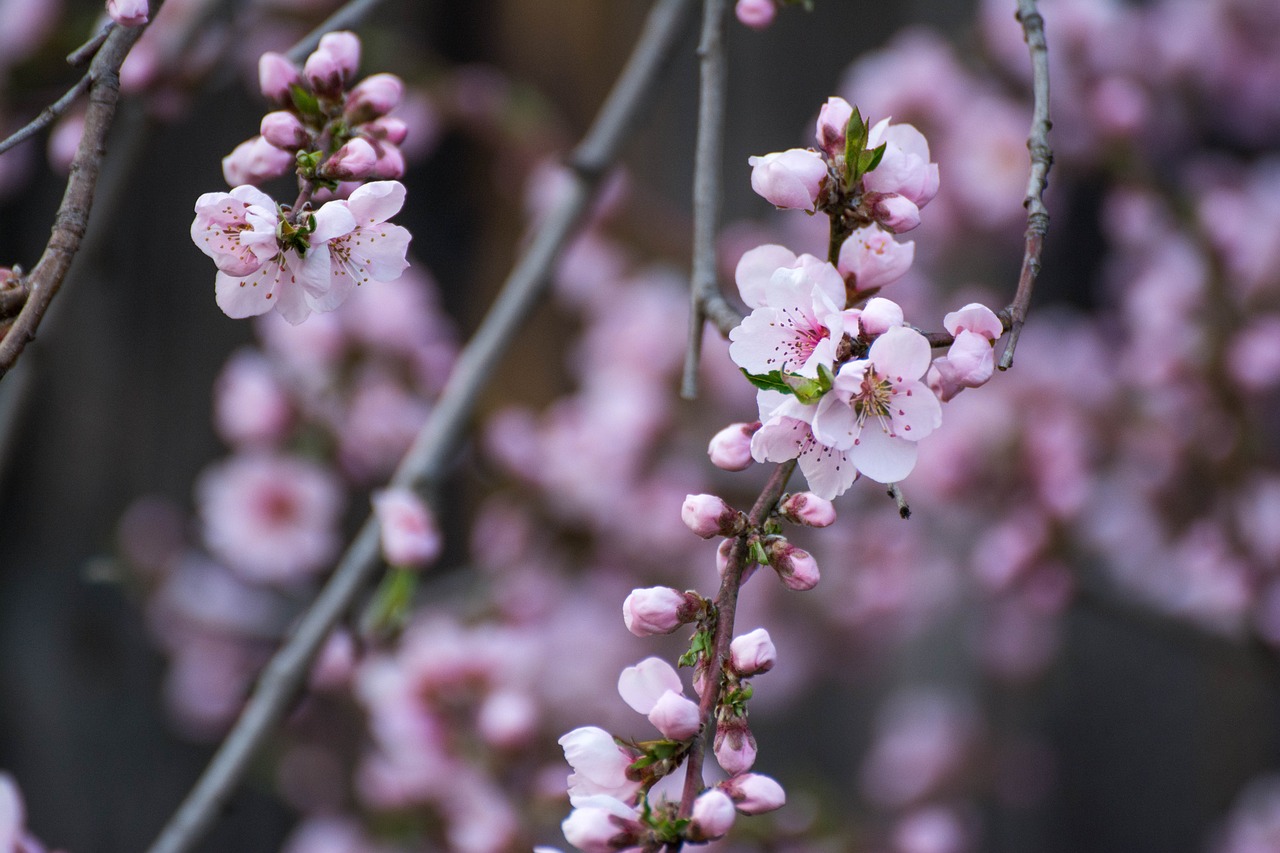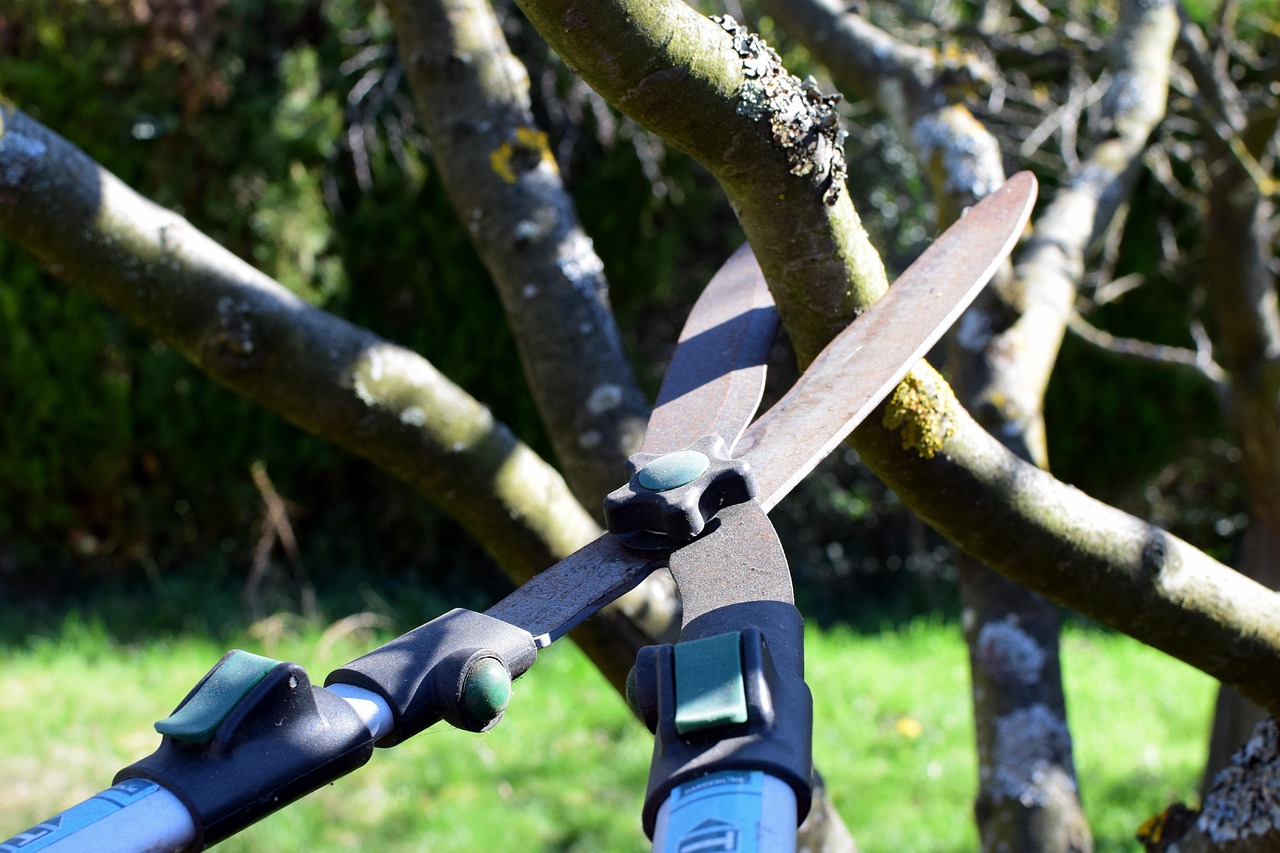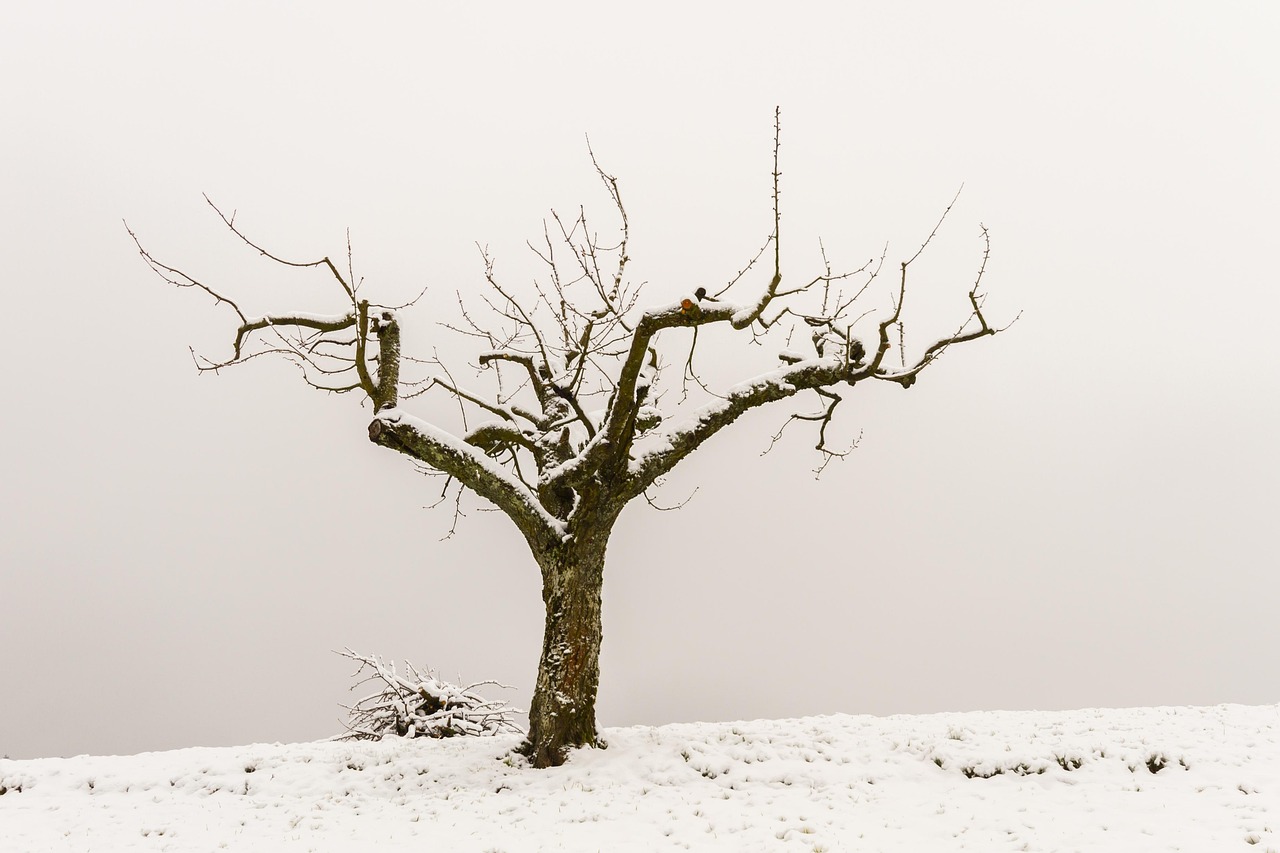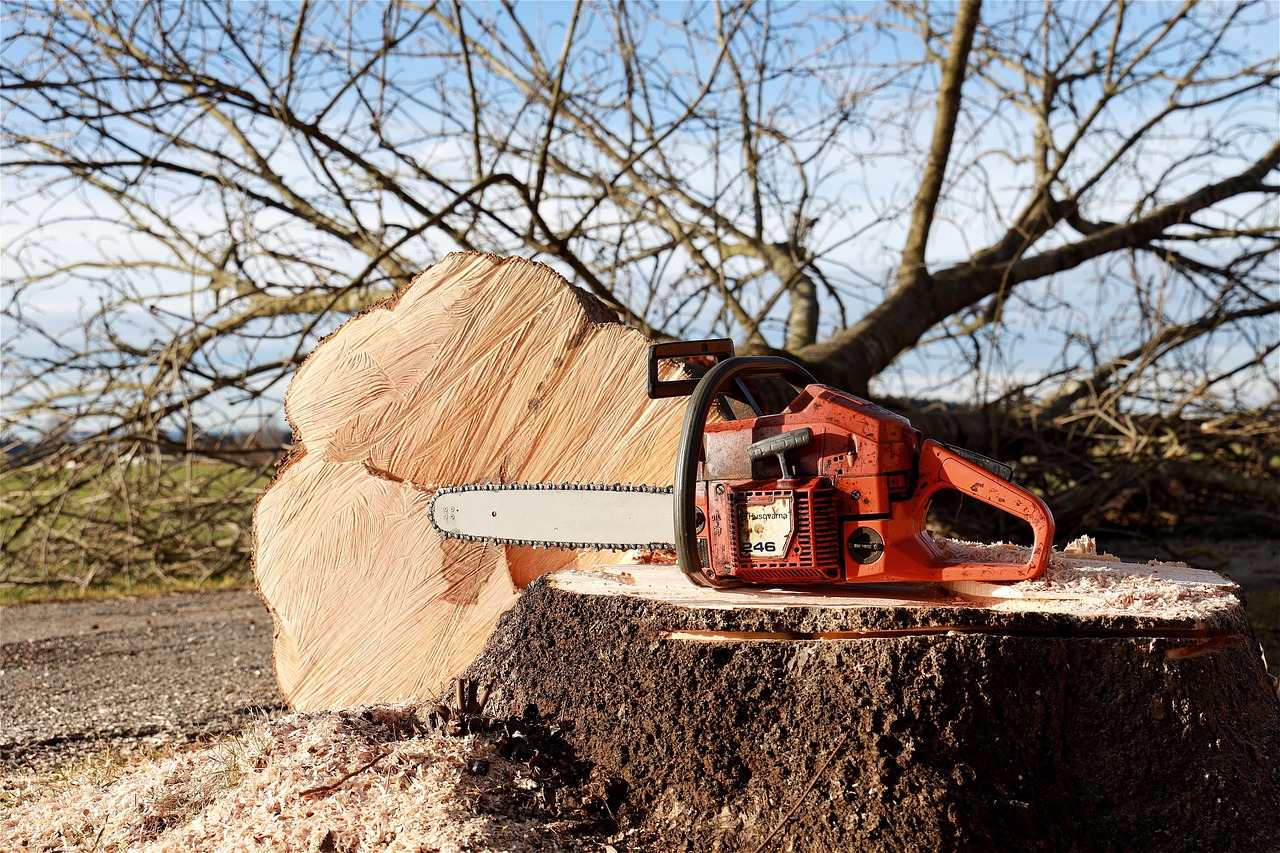Nectarine tree pruning is essential for maximizing fruit yield. Proper pruning encourages healthy growth, improves air circulation, and enhances sunlight exposure, which all contribute to producing juicy fruit.
Nectarine trees, known for their sweet and flavorful fruits, require specific care to thrive and bear abundant crops. Pruning is one of the most significant aspects of maintaining these trees. It involves cutting back certain branches to promote better growth and fruit production. Without regular pruning, nectarines can become overgrown and less productive.

Understanding the right techniques and timing for pruning is crucial. Nectarine trees should be pruned during the dormant season, typically in late winter or early spring before new growth begins. This timing helps minimize stress on the tree and reduces the risk of disease. Pruning not only shapes the tree but also removes any dead or diseased wood, allowing the tree to focus its energy on producing healthy fruit.
Benefits of Pruning Nectarine Trees
Pruning offers numerous benefits that significantly impact fruit yield and tree health. Here are some key advantages:
- Improved Air Circulation: Properly pruned trees allow for better airflow, reducing the risk of fungal diseases.
- Enhanced Sunlight Exposure: Pruning opens up the canopy, ensuring all parts of the tree receive adequate sunlight, which is vital for fruit development.
- Increased Fruit Size: By thinning out excess branches, nutrients are concentrated on fewer fruits, leading to larger and juicier nectarines.
- Better Tree Structure: A well-pruned tree maintains a strong structure, making it more resilient to wind and other environmental factors.
The benefits of proper pruning extend beyond just aesthetics. They play a crucial role in ensuring that your nectarine tree remains productive and healthy over the long term. Understanding how to prune correctly can lead to a bountiful harvest each season.

When to Prune Nectarine Trees
The timing of pruning is critical for the health of your nectarine tree. The best time to prune is during the late winter months, just before the tree starts to bud. This period is often referred to as “dormant season.” During dormancy, the tree conserves energy, making it less susceptible to stress from pruning.
Pruning too early in the winter can expose the tree to cold damage. Conversely, pruning too late can interfere with flower and fruit development. Aim to complete your pruning before the first buds begin to swell. This timing allows you to make cuts that enhance blooming and fruiting.
| Pruning Time | Season | Notes |
|---|---|---|
| Late Winter | February – March | Best time for pruning to minimize stress on the tree. |
| Summer | June – July | Light pruning may be done to remove excessive growth. |
While dormant pruning is the most common method, summer pruning can also be beneficial. It helps control excessive growth and improves light penetration during the growing season. However, summer pruning should be approached with caution and limited to light trimming to avoid stress on the tree.

Techniques for Pruning Nectarine Trees
There are several techniques involved in pruning nectarines effectively. Each technique serves a purpose in promoting healthy growth and maximizing fruit production. Here are some essential techniques:
- Crown Thinning: This involves removing some branches from the center of the tree to improve sunlight penetration and airflow.
- Crown Reduction: This technique reduces the overall height or width of the tree while maintaining its shape.
- Heading Back: Cutting back new growth to encourage branching and denser foliage which supports more fruit production.
- Removing Dead or Diseased Wood: Always inspect for any dead or infected branches and remove them promptly to prevent spreading disease.
Using sharp, clean tools is vital for effective pruning. Dull tools can cause damage and leave open wounds, making trees susceptible to infections. When making cuts, aim for a 45-degree angle to encourage proper healing.
Mastering these techniques will help ensure that your nectarine trees remain healthy and productive, ultimately leading to sweeter and juicier fruits during harvest time. Understanding the fundamentals of pruning will set you on the right path toward achieving a thriving nectarine orchard.

Understanding Nectarine Tree Growth Patterns
To effectively prune your nectarine trees, it is essential to understand their growth patterns. Nectarine trees typically exhibit a vigorous growth habit, characterized by a combination of vegetative and fruiting wood. Recognizing these patterns helps in making informed pruning decisions that can enhance fruit yield.
Nectarine trees usually grow in a vase shape, with several main branches emerging from a central trunk. This structure allows for good sunlight exposure and air circulation, both of which are crucial for fruit development. The growth cycle can be divided into key stages:
- Spring Growth: New shoots emerge, and flower buds begin to swell.
- Summer Growth: Vegetative growth continues, and fruit starts to develop.
- Fall Ripening: Fruits mature and are harvested, while the tree begins to prepare for dormancy.
- Winter Dormancy: The tree rests and conserves energy until spring.
Each growth stage presents unique opportunities and challenges for pruning. Understanding these stages allows you to tailor your pruning strategy to maximize the tree’s potential for juicy fruit yield.
Types of Pruning for Nectarine Trees
There are two main types of pruning techniques for nectarine trees: formative pruning and maintenance pruning. Each serves a specific purpose in the overall health and productivity of the tree.
Formative Pruning
This type of pruning is typically done during the first few years of the tree’s life. Its goal is to establish a strong structure that will support future growth and fruiting. Key actions during formative pruning include:
- Selecting Scaffold Branches: Choose 3-5 strong branches that will serve as the main framework for the tree.
- Encouraging Open Canopy: Space branches evenly around the trunk to allow light penetration and air circulation.
- Controlling Height: Trim back any vertical growth that exceeds desired height to maintain accessibility.
Formative pruning should be done in the early spring, before new growth starts. This helps shape the tree while minimizing stress.
Maintenance Pruning
Once a nectarine tree reaches maturity, maintenance pruning becomes essential. This method focuses on keeping the tree healthy and productive throughout its life. Key aspects include:
- Thinning Out: Remove excess branches to reduce competition for nutrients and sunlight.
- Renewal Pruning: Remove older wood to encourage new growth that yields better fruit quality.
- Shaping the Tree: Maintain the open vase shape to ensure proper light exposure and airflow.
Maintenance pruning can take place in late winter or early spring, depending on the climate and the specific needs of your tree.
Common Mistakes in Pruning Nectarine Trees
While pruning is beneficial, there are common mistakes that many gardeners make, which can hinder the health and productivity of nectarine trees. Being aware of these pitfalls can save you time and effort in the long run.
- Over-Pruning: Removing too many branches can stress the tree and reduce fruit yield. Aim for balance instead of drastic cuts.
- Poor Timing: Pruning at the wrong time can expose the tree to cold damage or interfere with flowering. Stick to the recommended seasons.
- Dull Tools: Using blunt tools makes jagged cuts that can harm the tree. Always use sharp, clean tools for precise cuts.
- Naming Mistakes: Failing to identify dead or diseased wood can lead to further issues. Regularly inspect your tree for signs of health.
Avoiding these mistakes can lead to healthier trees that produce more juicy nectarines during harvest season.
The Role of Fertilization in Pruning Success
Fertilization plays a significant role in the overall health of your nectarine trees and complements effective pruning practices. After pruning, it’s essential to provide adequate nutrients to help the trees recover and thrive. Here are some key points regarding fertilization:
- Nutrient Needs: Nectarine trees benefit from specific nutrients like nitrogen, phosphorus, and potassium. A balanced fertilizer can help meet these needs.
- Timing of Fertilization: Apply fertilizer in early spring as new growth begins. Avoid fertilizing late in the season, as this can promote tender growth susceptible to winter damage.
- Soil Testing: Conduct soil tests to determine nutrient levels and pH balance. This information helps tailor your fertilization strategy effectively.
A well-balanced approach to fertilization supports healthy growth patterns, enhancing the benefits of your pruning efforts and contributing to a fruitful harvest.
By understanding the growth patterns, types of pruning, common mistakes, and the role of fertilization, you can create a comprehensive strategy that maximizes the yield of juicy nectarines from your trees. Each aspect is interconnected, contributing to the overall health and productivity of your orchard.
Pest and Disease Management in Nectarine Trees
Maintaining healthy nectarine trees goes beyond pruning and fertilization. Effective pest and disease management is crucial for ensuring a bountiful yield of juicy fruits. Various pests and diseases can affect nectarines, making it essential to be proactive in managing these challenges.
Common Pests Affecting Nectarine Trees
Several pests can threaten the health of nectarine trees. Recognizing these pests early can help you take action before they cause significant damage. Here are some common pests to watch for:
- Peach Tree Borers: These larvae bore into the trunk and branches, causing significant damage. Look for signs of sawdust near entry points.
- Spider Mites: These tiny pests thrive in dry conditions and can create webbing on leaves. They suck plant juices, leading to yellowing leaves.
- Aphids: Small and green, aphids feed on sap and can lead to distorted growth. They can also transmit diseases between plants.
- Fruit Flies: These pests lay eggs in ripening fruits, leading to larvae that damage the fruit. Monitor for fruit drop or premature ripening.
Regular inspections of your trees can help catch these pests early. If discovered, there are various control methods available.
Pest Control Methods
Utilizing both organic and chemical controls can manage pest populations effectively. Here are some methods to consider:
- Insecticidal Soap: This organic solution targets soft-bodied insects like aphids and spider mites. Apply it during cooler parts of the day to avoid harming beneficial insects.
- Neem Oil: Derived from the neem tree, this oil disrupts the life cycle of many pests and is safe for beneficial insects when used according to instructions.
- Beneficial Insects: Introduce natural predators like ladybugs and lacewings to keep pest populations under control.
- Traps: Use sticky traps or bait traps to monitor and reduce pest numbers, particularly for fruit flies.
Maintaining a healthy ecosystem around your nectarine trees can also help deter pests naturally.
Disease Management in Nectarine Trees
Nectarine trees are susceptible to several diseases that can compromise fruit quality and tree health. Understanding these diseases is crucial for effective management.
Common Diseases in Nectarine Trees
A few common diseases affecting nectarines include:
- Brown Rot: This fungal disease causes brown, mushy spots on fruit, leading to premature fruit drop. It thrives in warm, humid conditions.
- Leaf Curl: Caused by a virus, this disease leads to distorted leaves that curl and become discolored. It often appears in early spring.
- Powdery Mildew: This fungal infection manifests as white powder on leaves and stems, usually in warm, dry weather. It can weaken the plant and reduce fruit quality.
- Root Rot: Overwatering or poor drainage can cause root rot, leading to wilting and poor growth. Healthy root systems are vital for tree health.
Identifying the signs of these diseases early allows for timely intervention to protect your trees.
Disease Control Strategies
Implementing effective disease control strategies can safeguard your nectarine trees. Consider the following methods:
- Cultural Practices: Ensure proper spacing between trees to improve airflow and reduce humidity, which helps prevent diseases.
- Fungicides: Use fungicides as a preventive measure against fungal diseases, especially during high-risk periods like wet springs.
- Sanitation: Remove fallen fruit and debris from around the tree to minimize disease spread. Clean pruning tools between cuts to avoid transferring pathogens.
- Disease-Resistant Varieties: When planting new trees, consider varieties known for resistance to common diseases.
These strategies not only help manage existing issues but also prevent future outbreaks, contributing to healthier trees.
The Importance of Watering Practices
Proper watering is another essential component of maintaining healthy nectarine trees. The right amount of water supports strong growth, helps prevent stress, and enhances fruit quality.
Watering Techniques
The watering technique you choose can significantly impact the health of your nectarine trees. Here are some effective techniques:
- Drip Irrigation: This method delivers water directly to the roots, minimizing evaporation and ensuring deep penetration into the soil.
- Soaker Hoses: Soaker hoses allow water to seep out slowly along their length, providing consistent moisture without saturating the surface.
- Hand Watering: For smaller gardens, hand watering can ensure that each tree receives adequate attention and moisture levels can be monitored closely.
The goal is to maintain consistent moisture without overwatering, which can lead to root rot or other water-related issues.
Drought Considerations
If you face drought conditions, it’s crucial to adjust your watering schedule accordingly. During dry spells, focus on deep watering rather than frequent shallow watering. This approach encourages roots to grow deeper into the soil, making them more resilient during dry periods.
By integrating pest and disease management along with effective watering practices into your overall care regimen, you can significantly enhance the productivity of your nectarine trees. Each aspect plays a vital role in ensuring a plentiful harvest of juicy nectarines each season.
Seasonal Care for Nectarine Trees
Maintaining healthy nectarines throughout the year requires a seasonal care approach. Each season presents unique challenges and opportunities for your trees. Understanding what to do during spring, summer, fall, and winter can enhance your tree’s health and fruit yield.
Spring Care
Spring is a critical time for nectarines as they awaken from dormancy. Here are key tasks to focus on during this season:
- Pruning: Complete any necessary pruning early in the season before new growth begins. This encourages strong branches and better fruit development.
- Fertilization: Apply a balanced fertilizer to support new growth. This is especially important if you conducted heavy pruning.
- Pest Monitoring: Begin monitoring for pests as insects become active with warmer temperatures. Early intervention can prevent infestations.
- Irrigation Setup: Check your irrigation system and ensure it is ready for the growing season. Adjust watering schedules based on rainfall and temperature.
Summer Care
During summer, nectarines require consistent care to promote fruit growth. Focus on the following:
- Water Management: Ensure trees receive adequate moisture, especially during dry spells. Deep watering is crucial for developing strong roots.
- Weed Control: Keep the area around the base of the tree free from weeds, which can compete for nutrients and water.
- Pest and Disease Checks: Continue monitoring for pests and diseases. Treat any issues promptly to minimize damage.
- Thinning Fruits: If there are too many fruits developing, thin them out to allow remaining fruits to grow larger and healthier.
Fall Care
As summer transitions into fall, prepare your trees for dormancy:
- Harvesting: Carefully harvest ripe nectarines to prevent damage to the tree and ensure the best flavor in your fruits.
- Post-Harvest Care: After harvesting, remove any fallen fruits and debris to minimize disease risk.
- Preparation for Winter: Apply a layer of mulch around the base of the tree to protect roots from cold temperatures and retain moisture.
- Soil Testing: Conduct soil tests in the fall to assess nutrient levels and adjust fertilization plans for the next spring.
Winter Care
During winter, most of the tree’s activity slows down, but care is still important:
- Protection from Cold: In areas with harsh winters, consider wrapping trunks with protective materials to prevent frost damage.
- Pest Control: Inspect the tree for any signs of pests hiding in the bark or branches. Treat as necessary during warmer winter days.
- Planning for Spring: Review your pruning and fertilization strategies for the upcoming year based on your observations from the past season.
Final Thoughts
Caring for nectarine trees involves a combination of pruning, pest management, watering, and seasonal attention. Each step contributes significantly to the overall health of the tree and the quality of the fruit produced. By understanding the growth patterns, implementing effective pruning techniques, managing pests and diseases, and maintaining proper watering practices, gardeners can ensure bountiful yields of juicy nectarines year after year.
The journey of cultivating healthy nectarine trees may seem demanding, but the rewards are well worth the effort. A thriving nectarine tree not only provides delicious fruit but also enhances the beauty of your garden. With patience and dedication, you can master the art of nectarine tree care, leading to fruitful harvests that delight family and friends alike.
In conclusion, whether you are a seasoned gardener or a beginner, following these guidelines will help you achieve success in growing nectarines. Embrace each season’s challenges with confidence, knowing that your efforts will lead to vibrant trees and a deliciously rewarding harvest.
